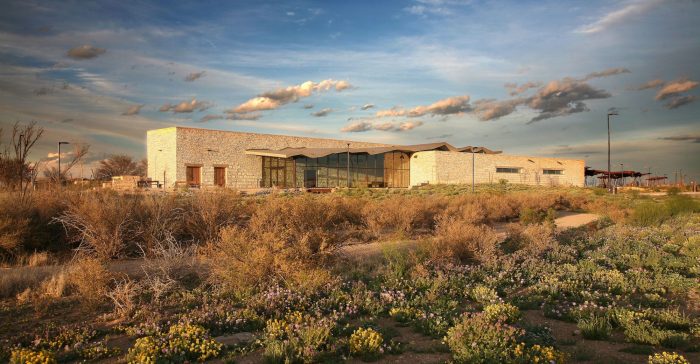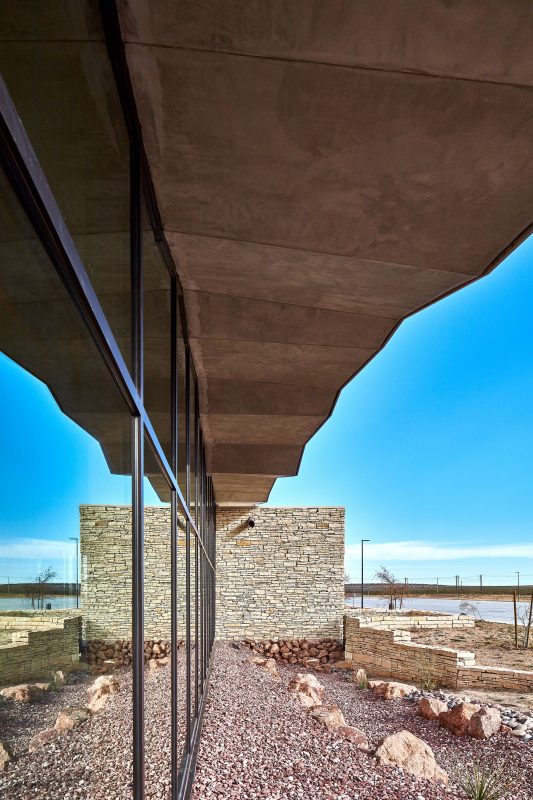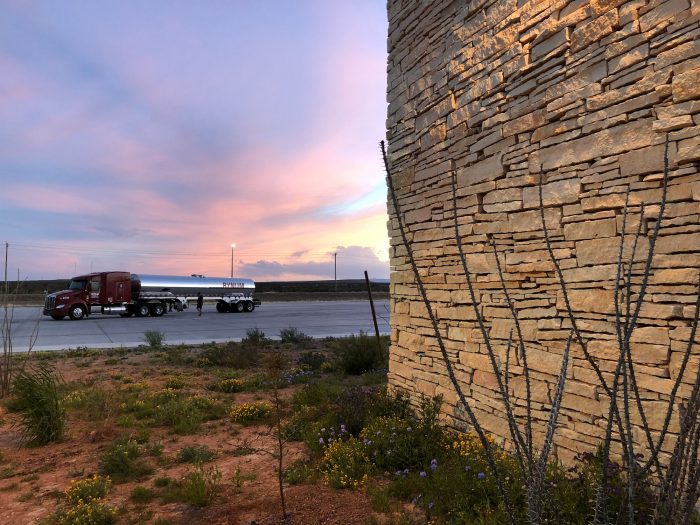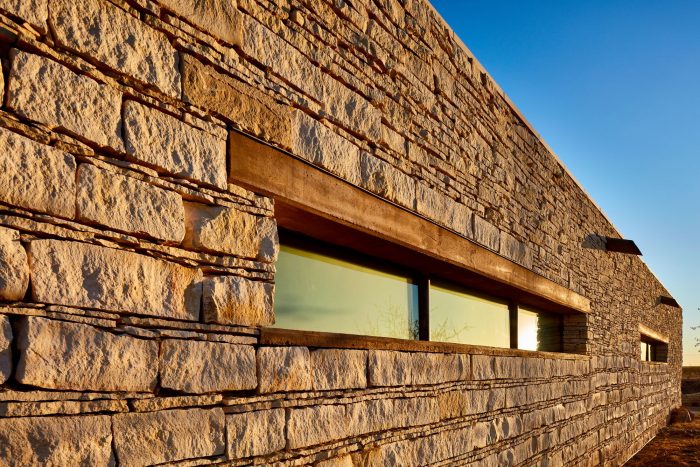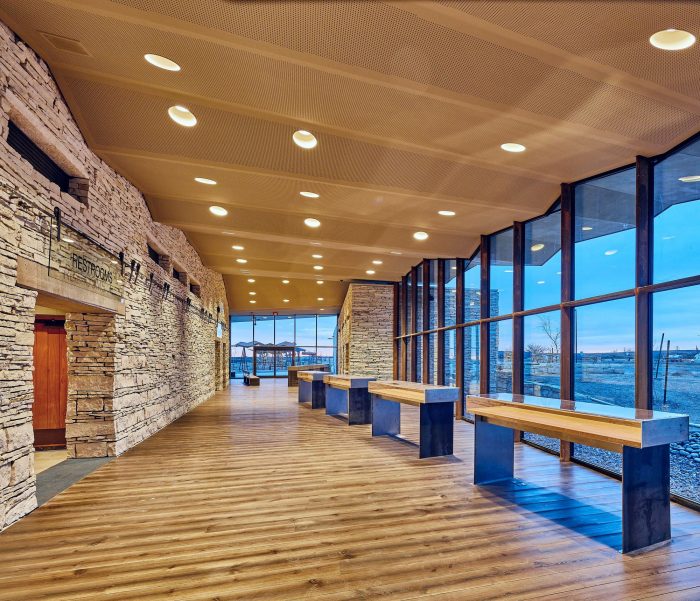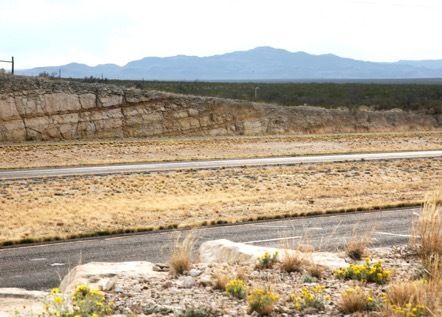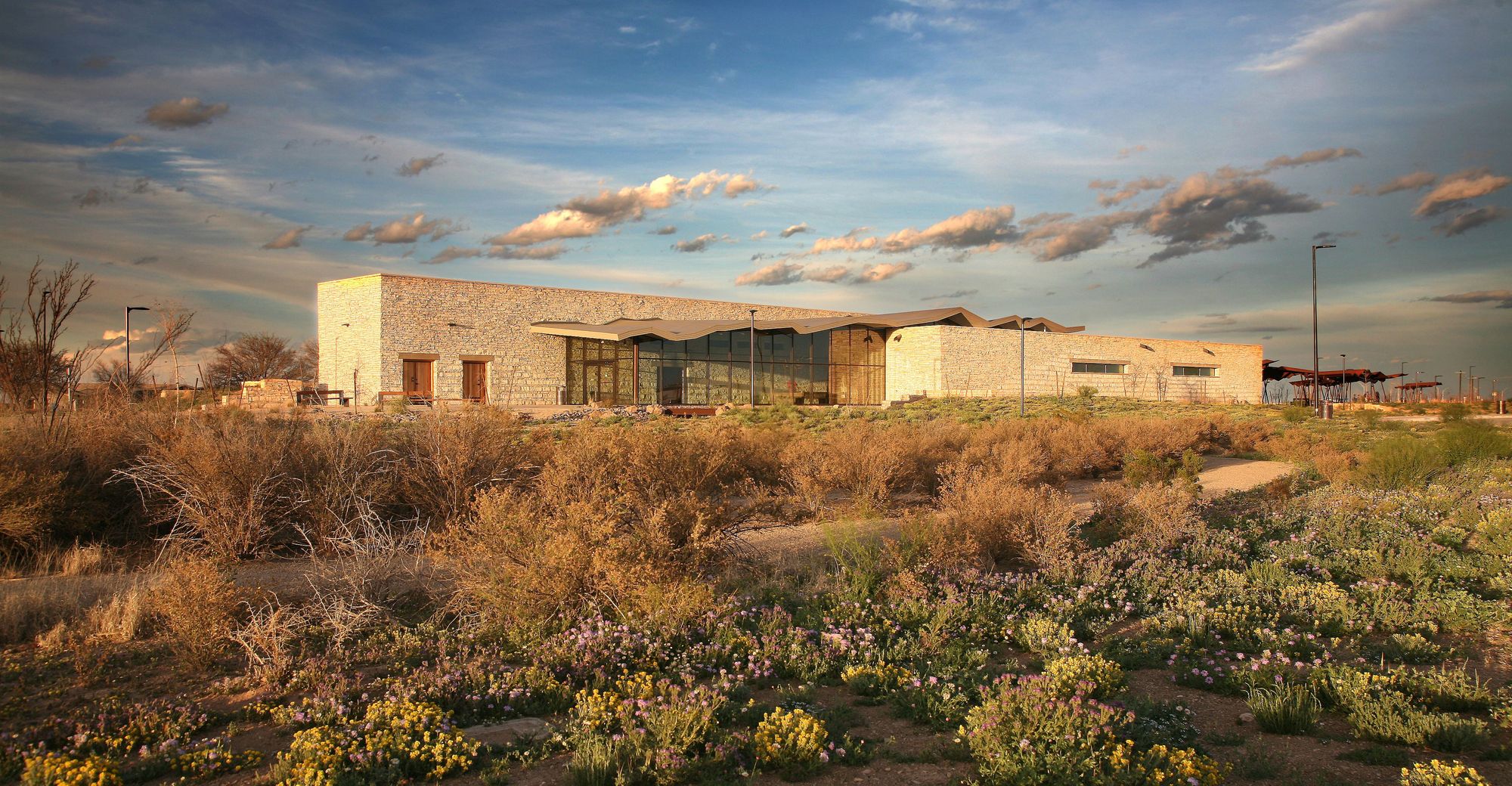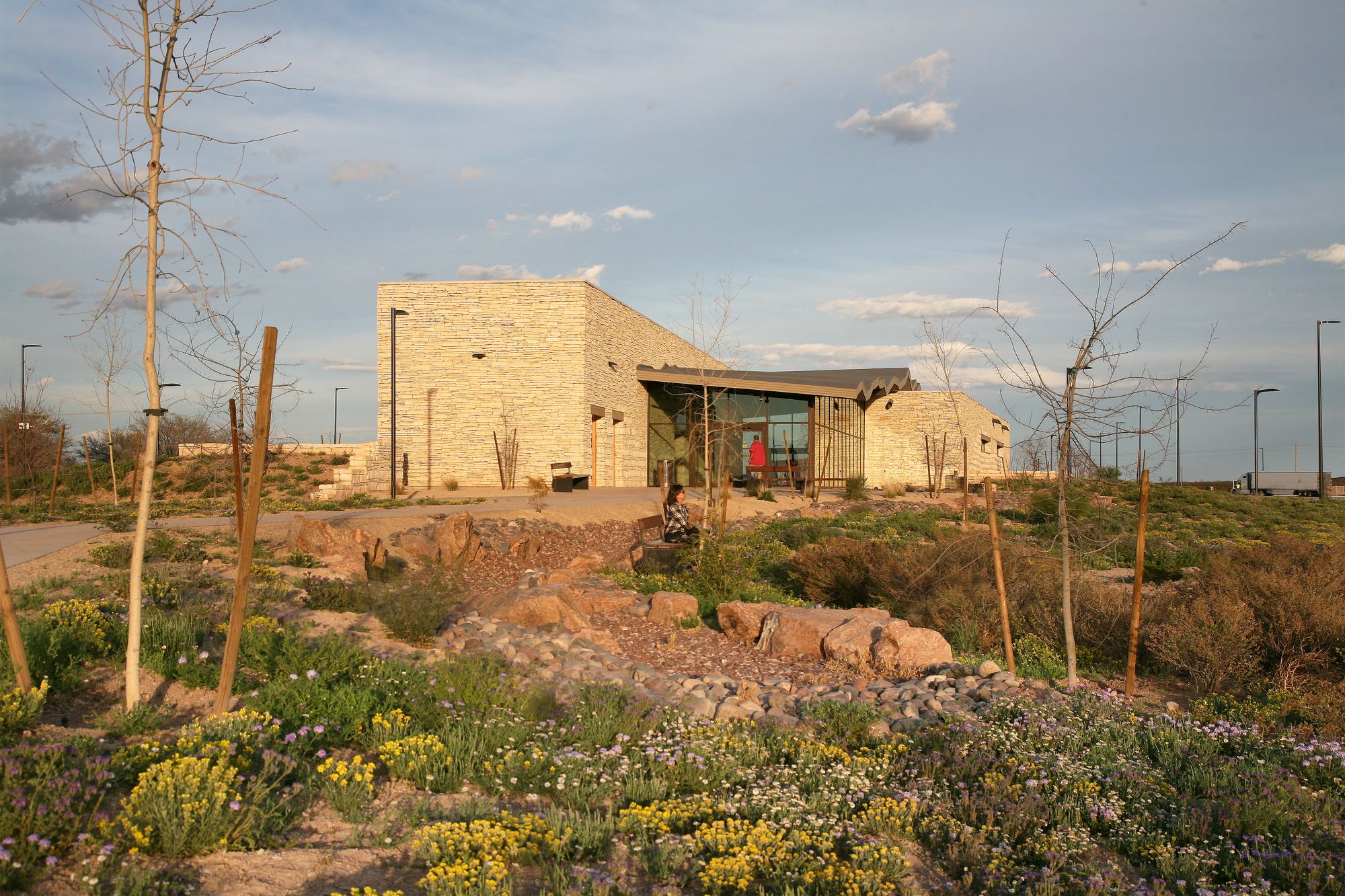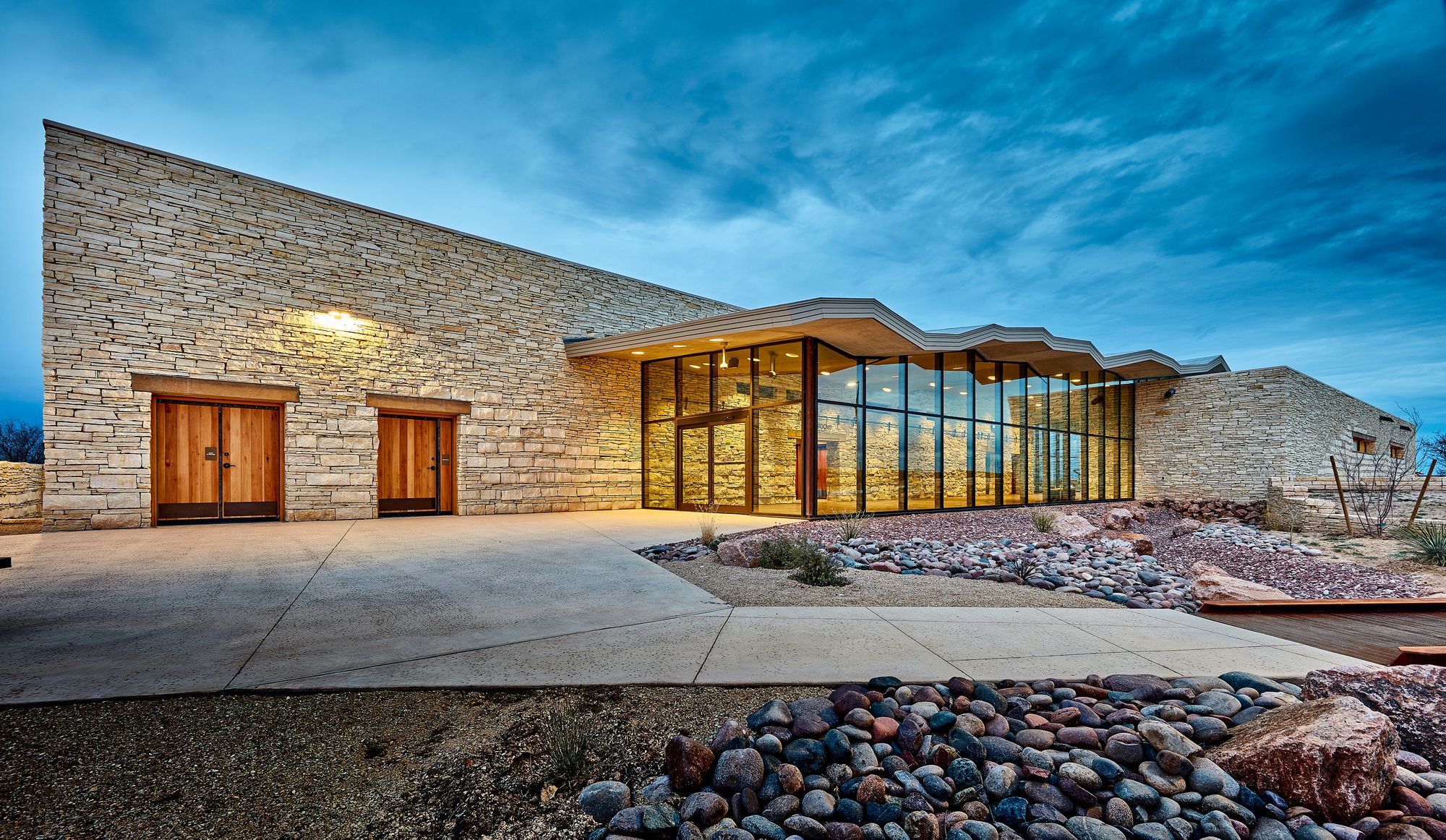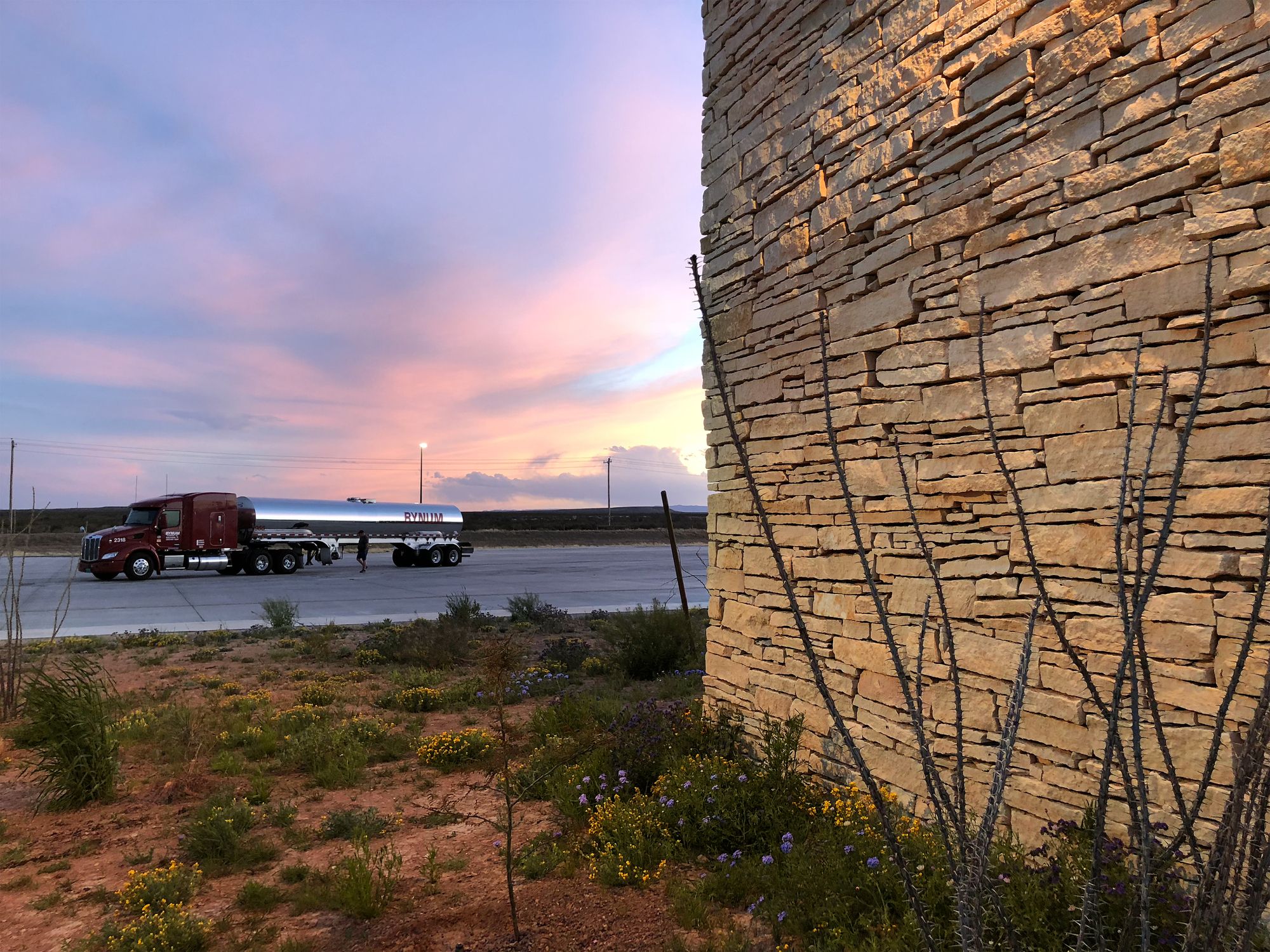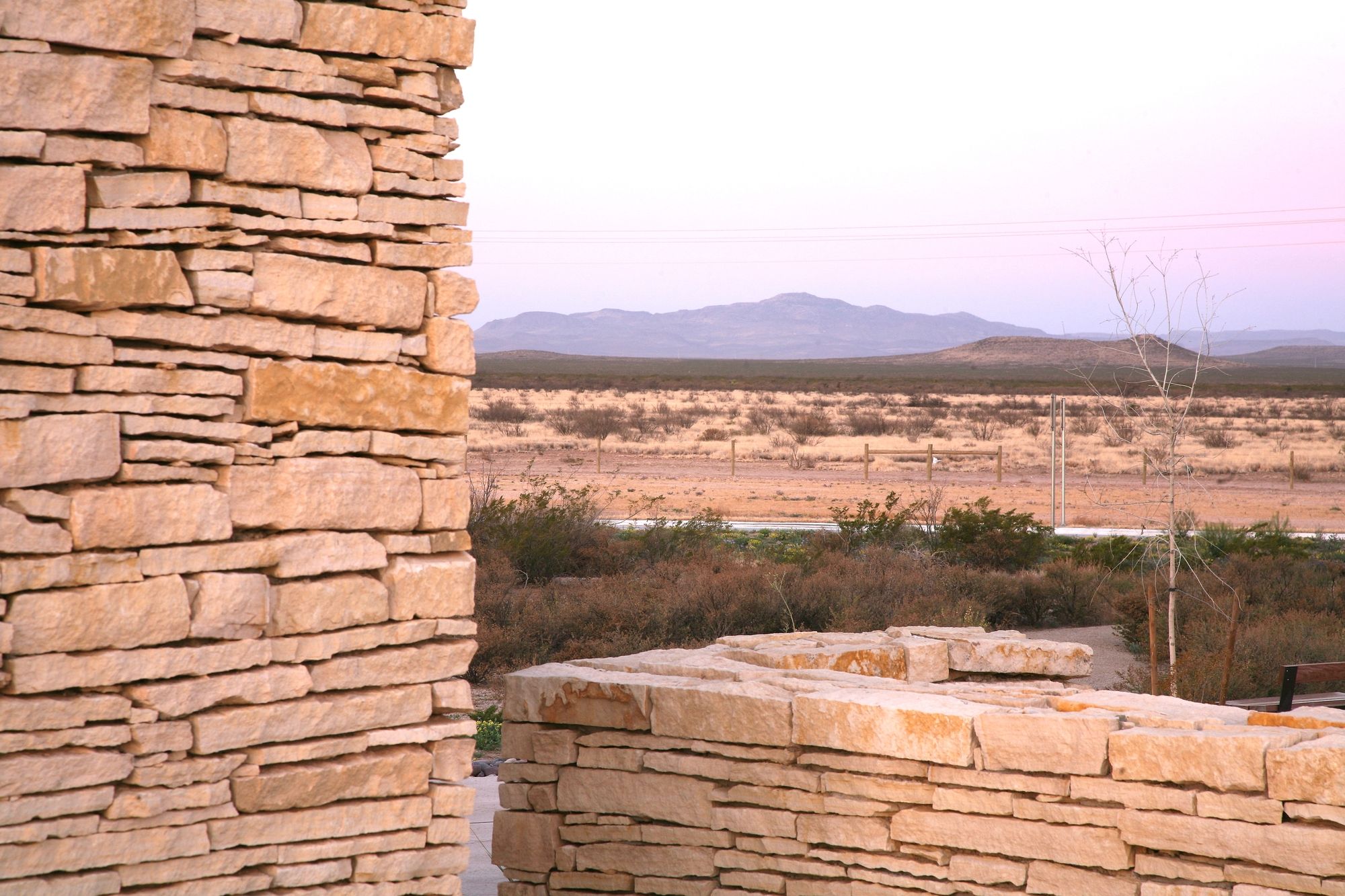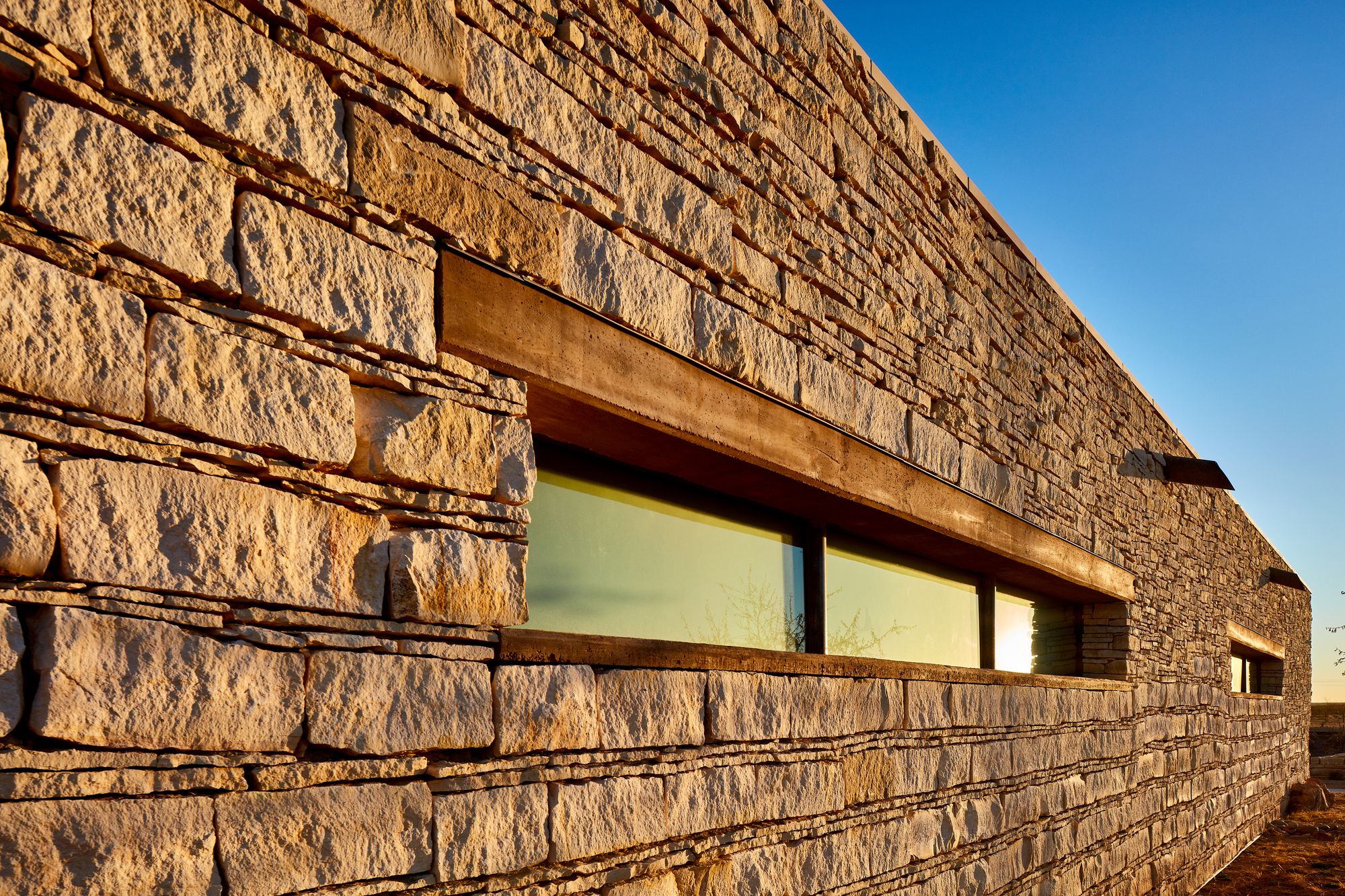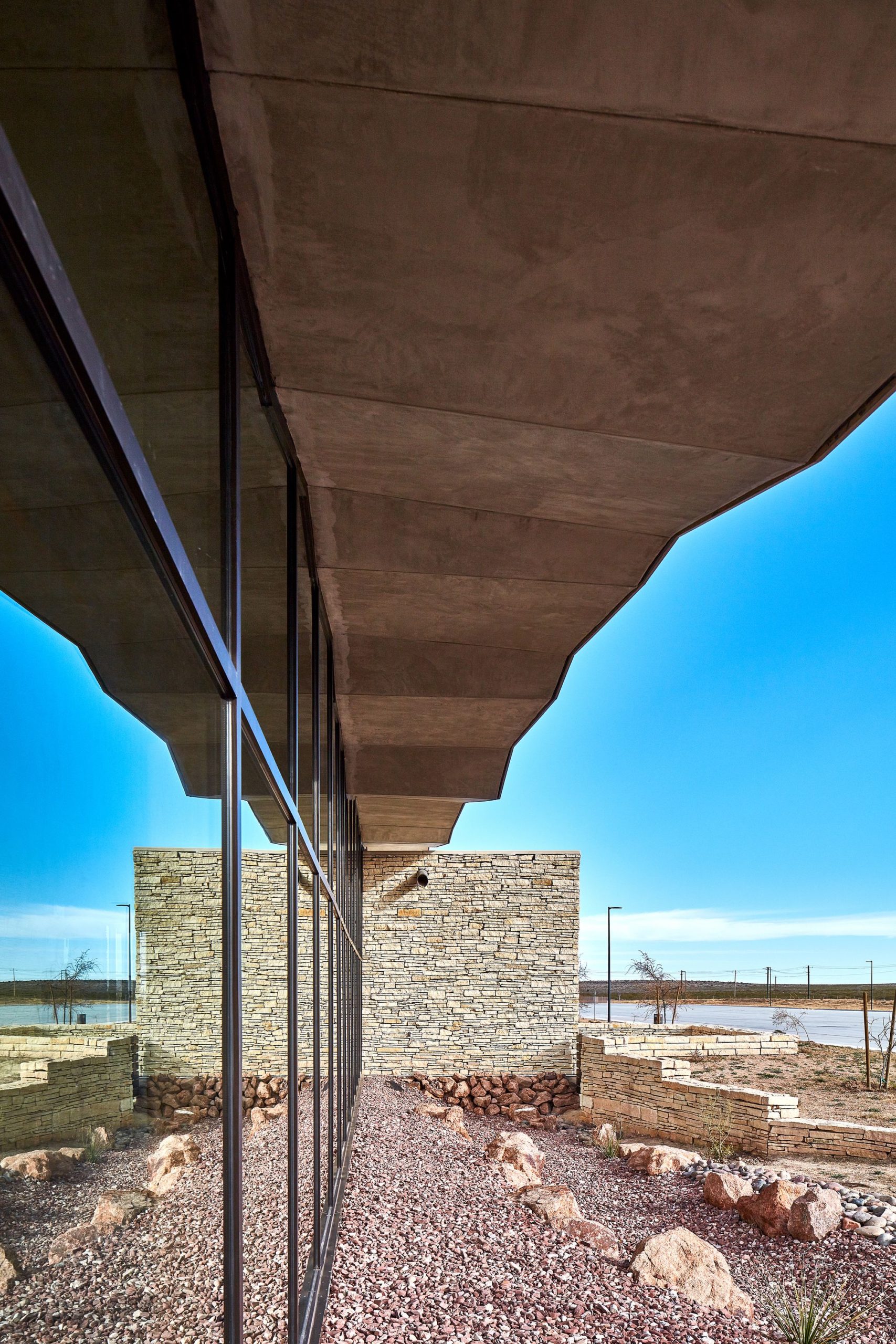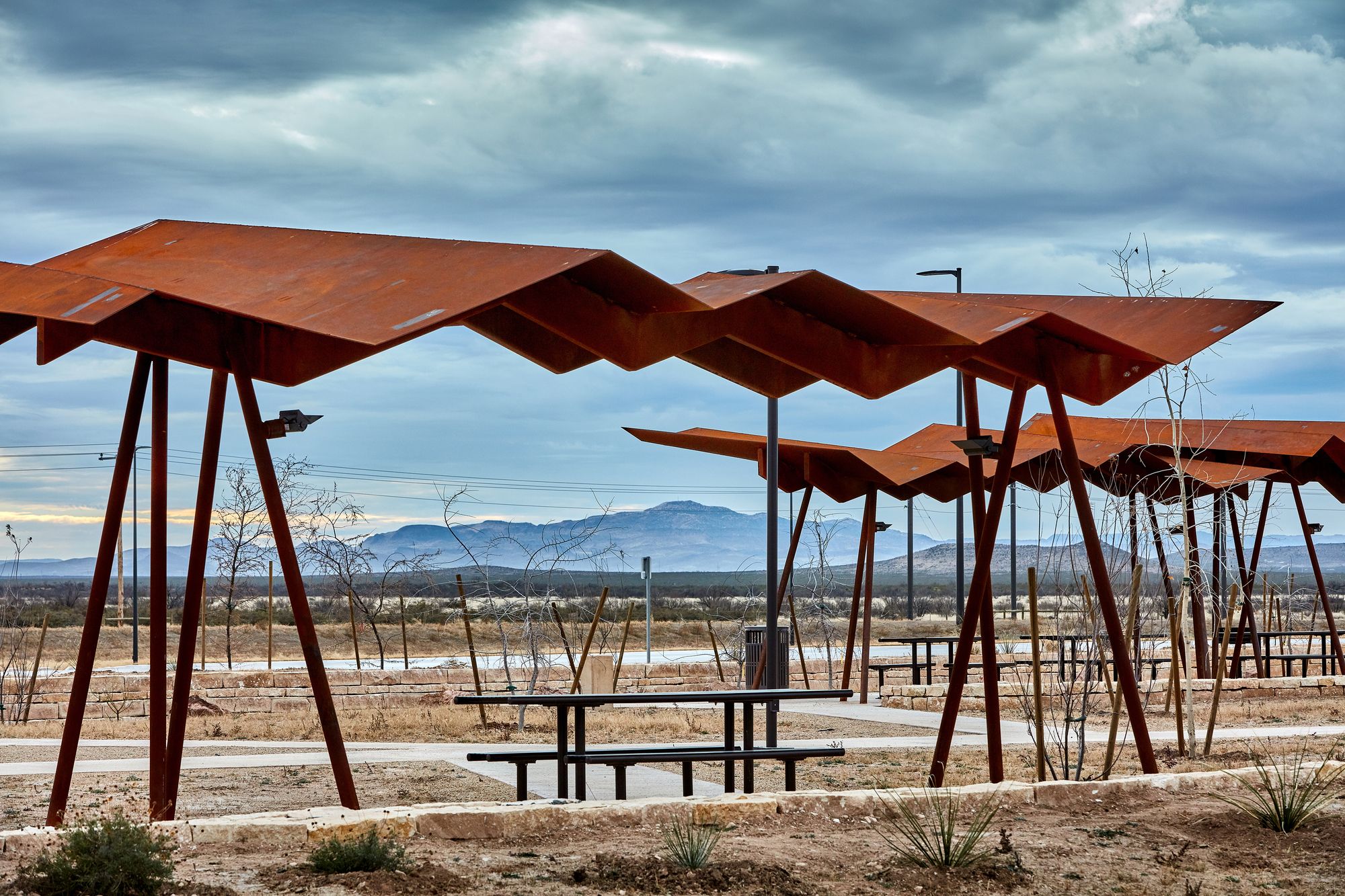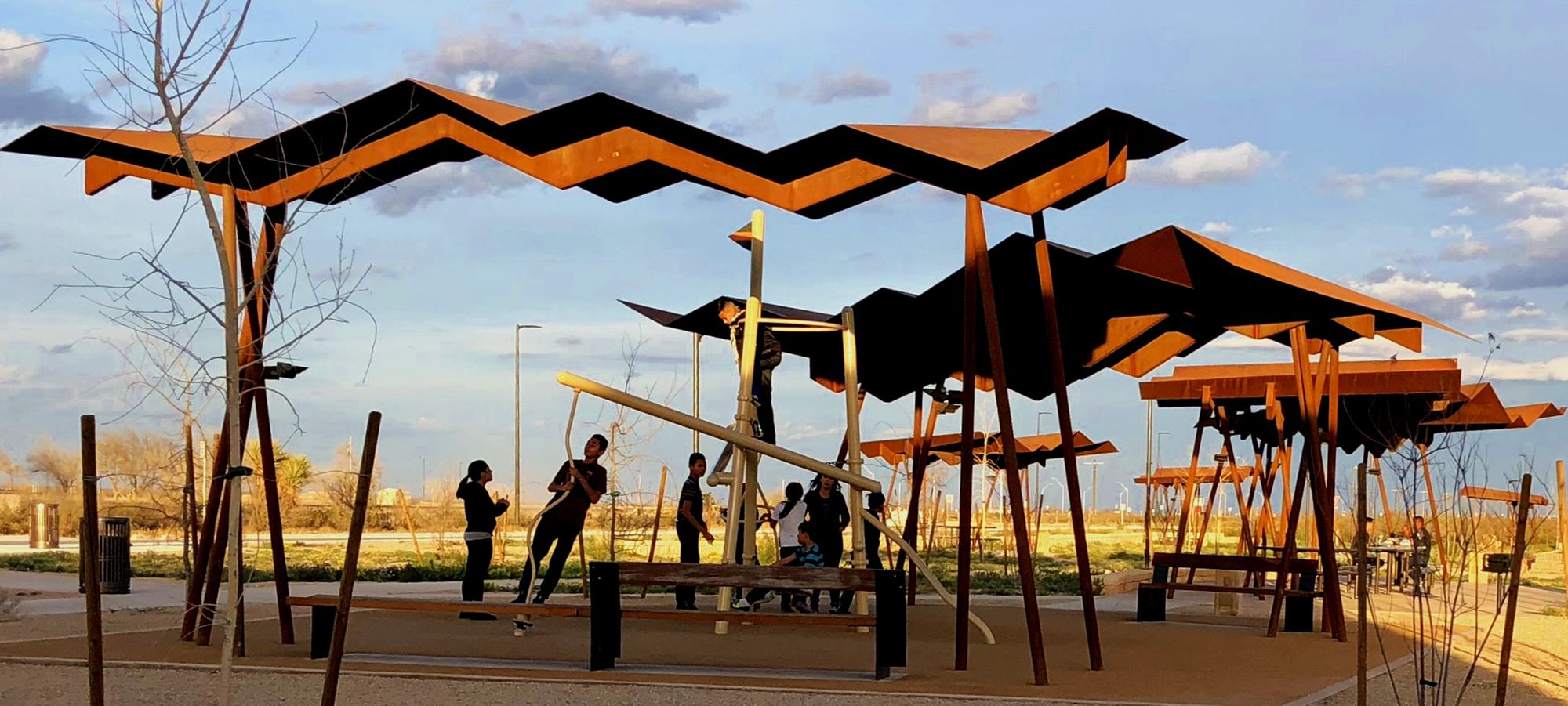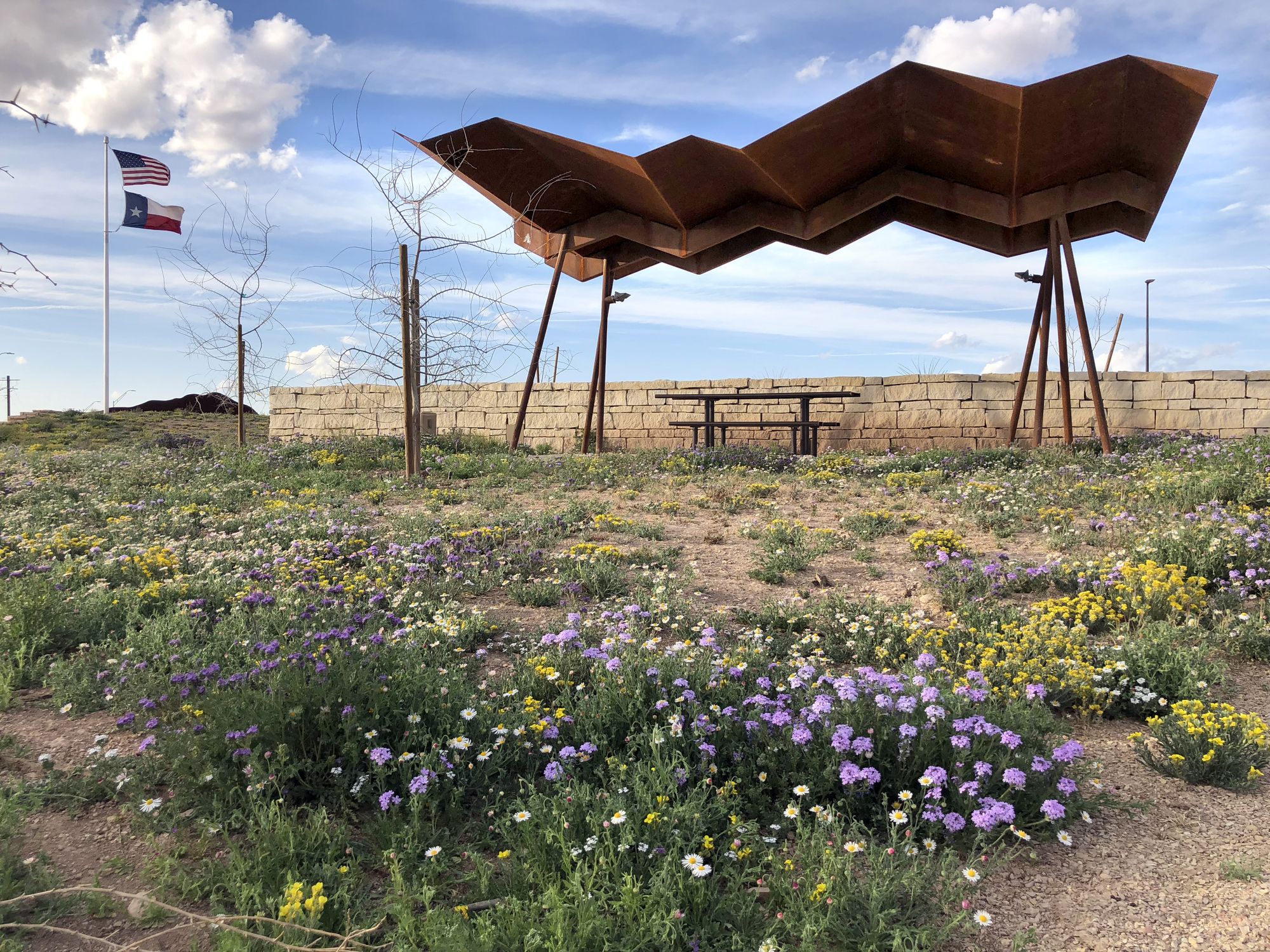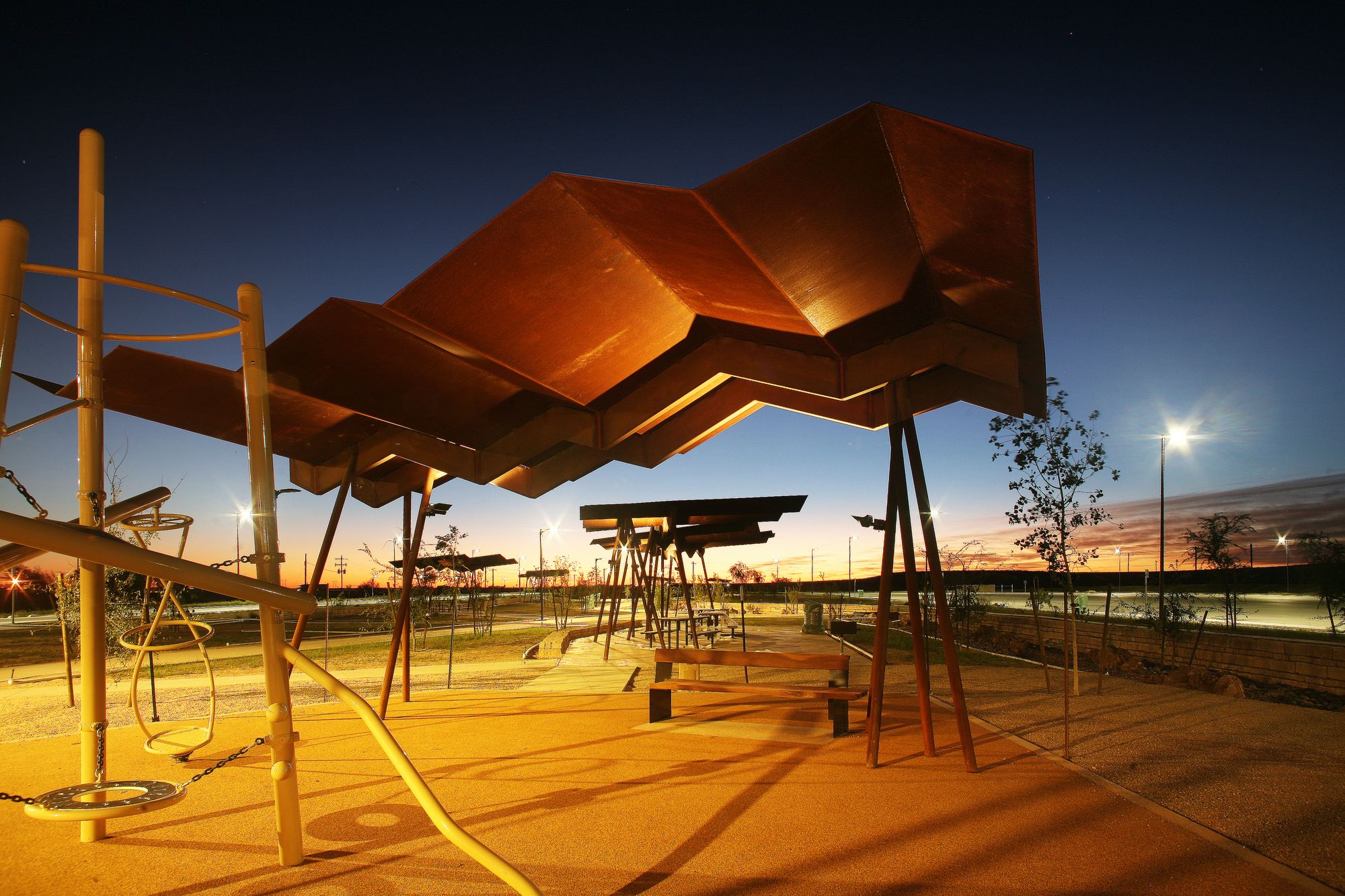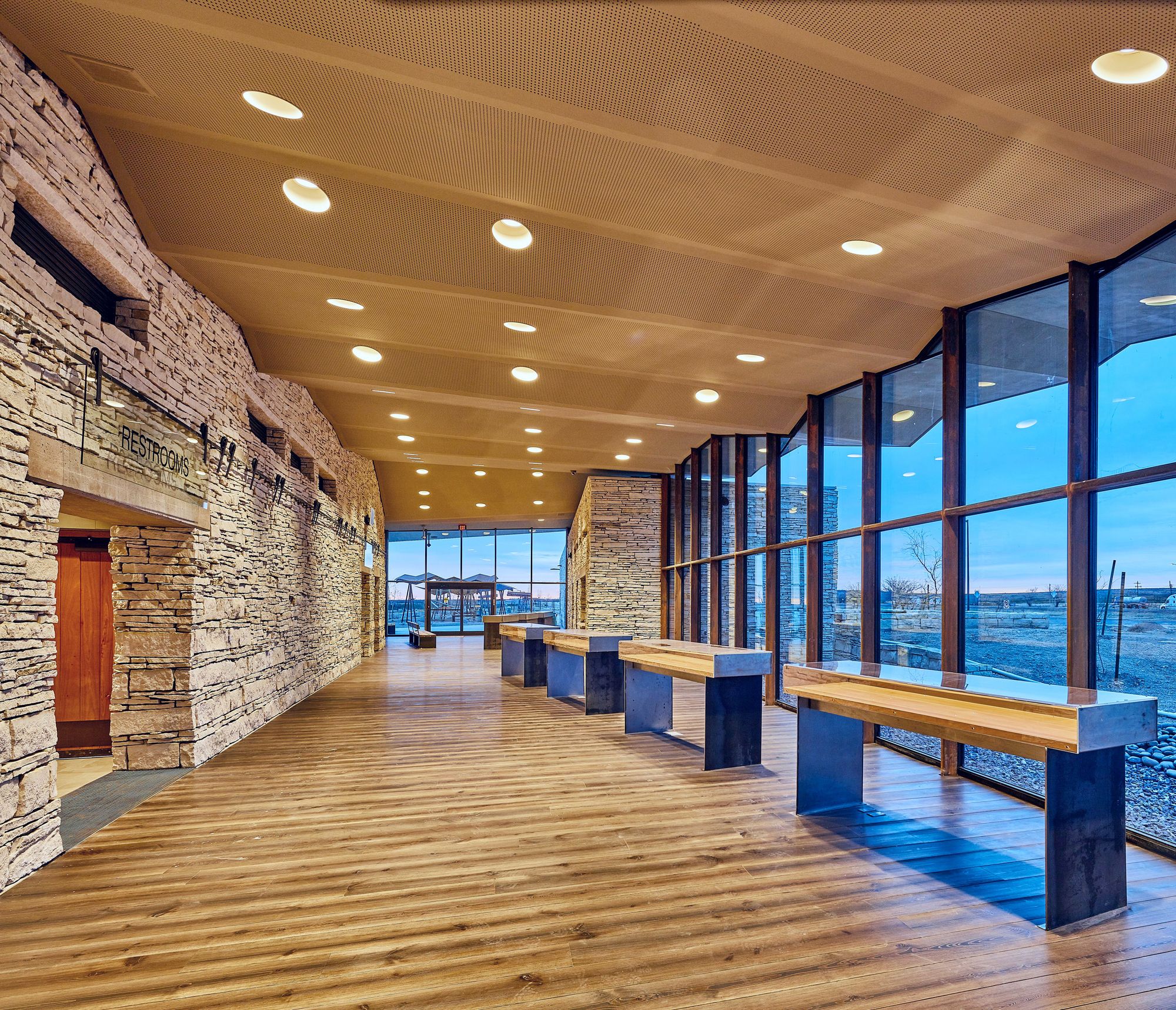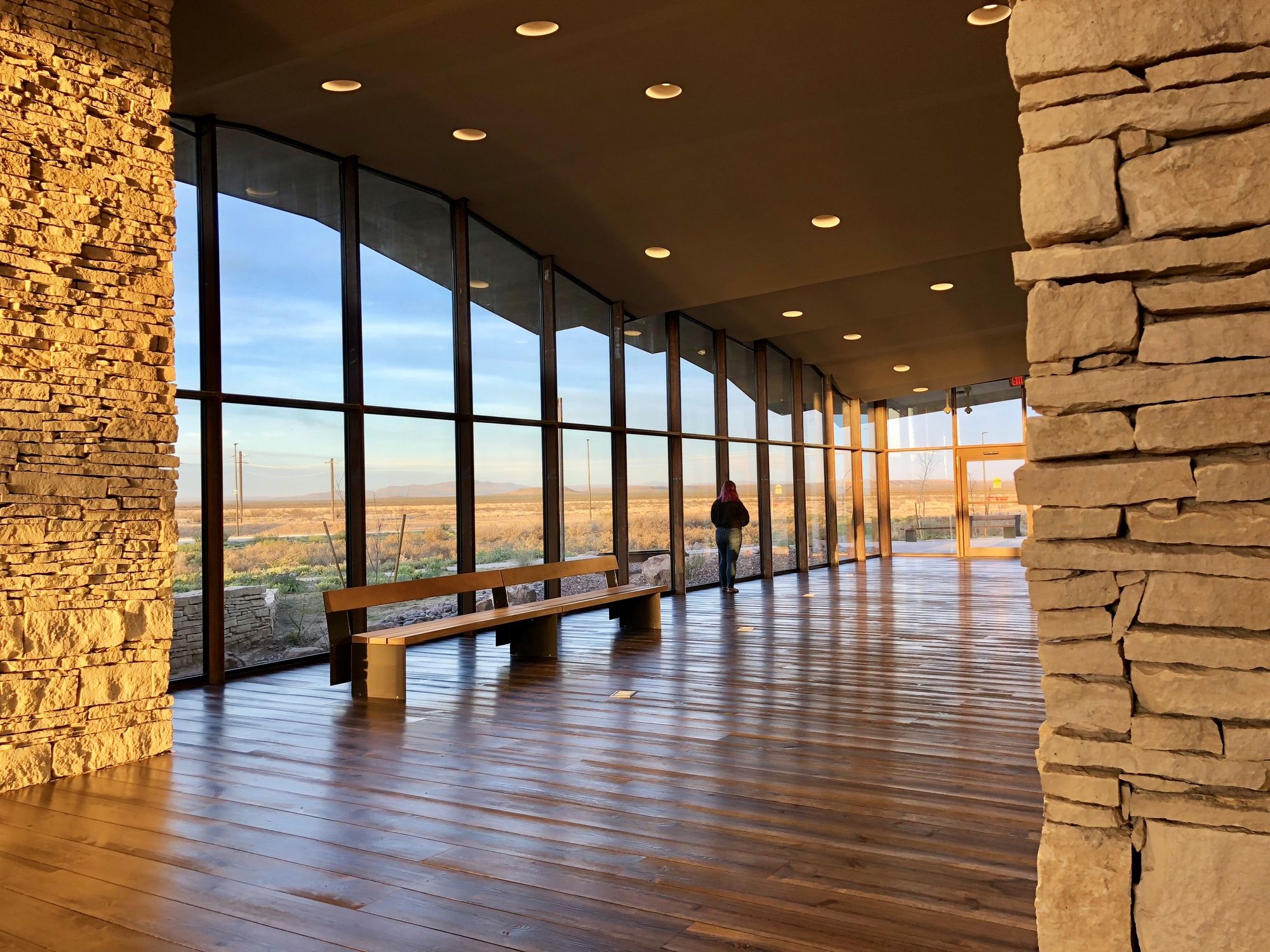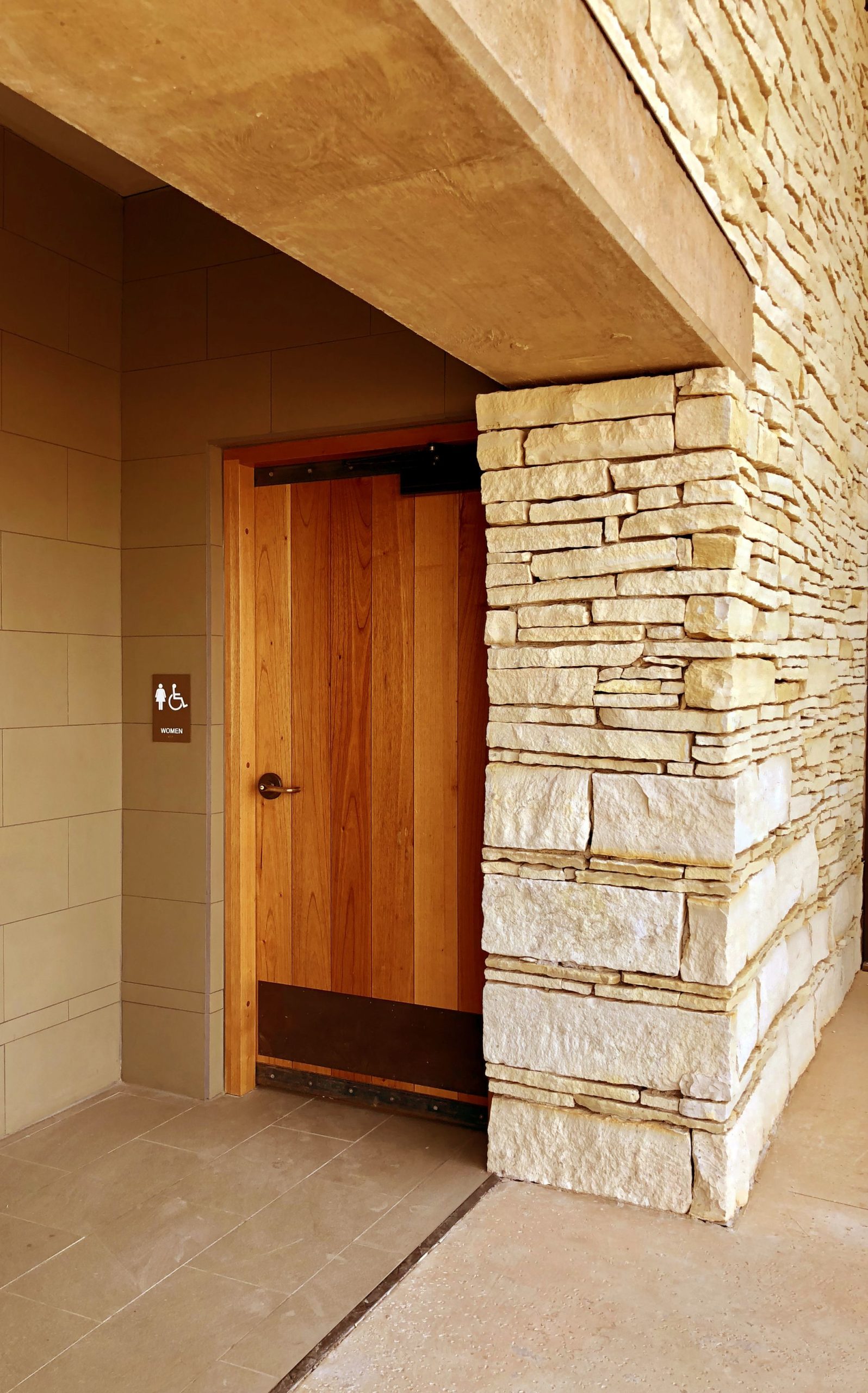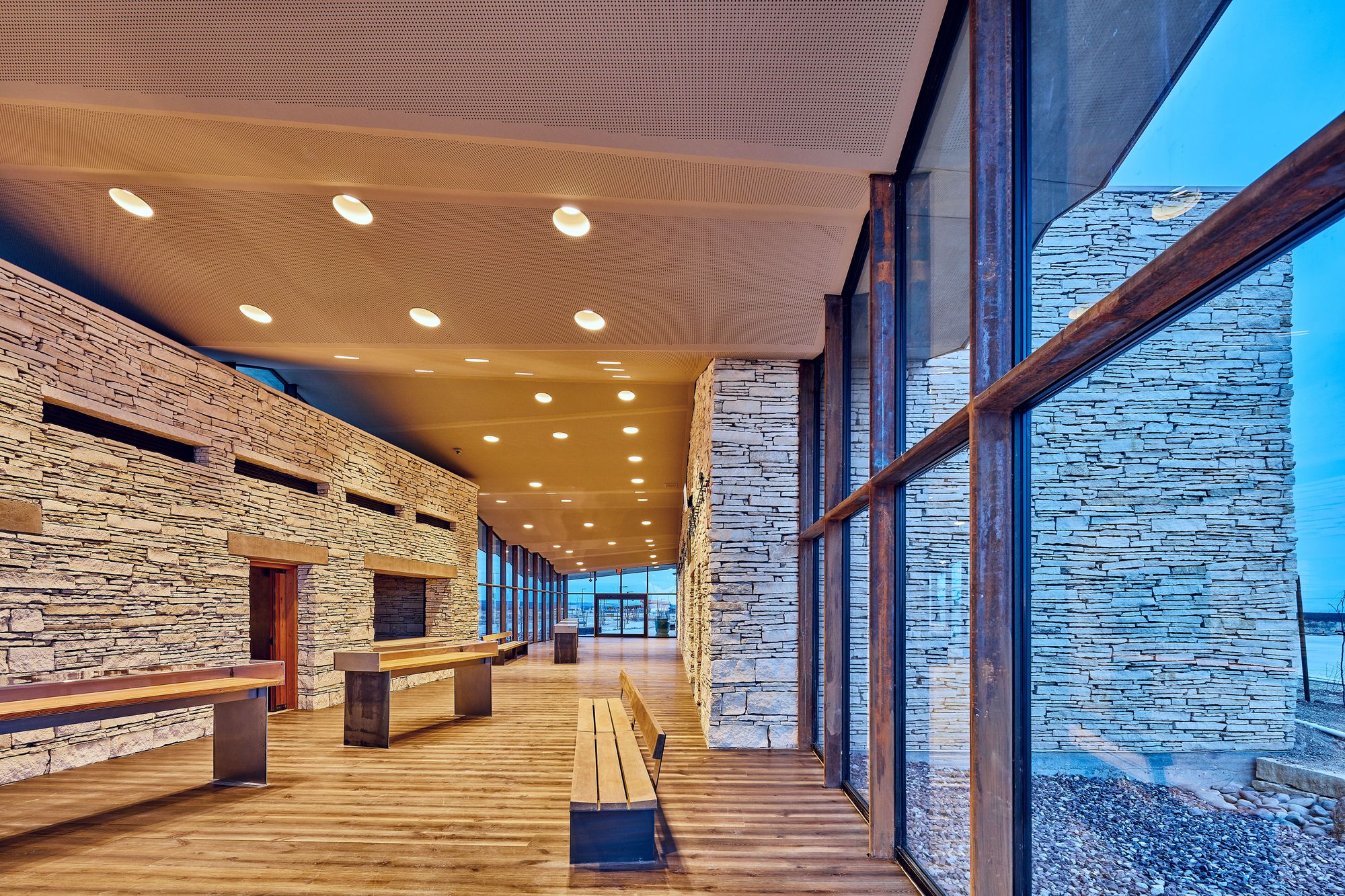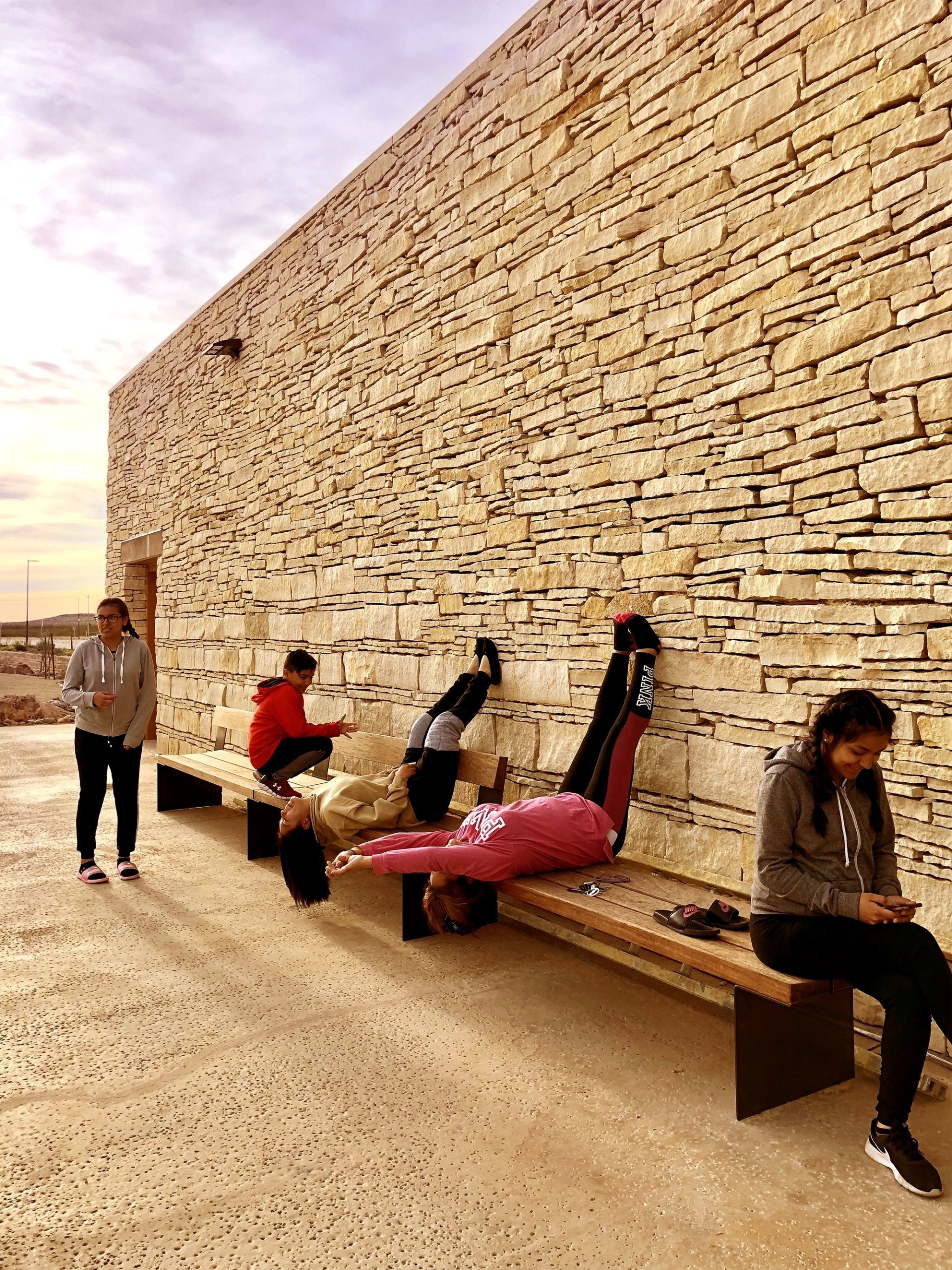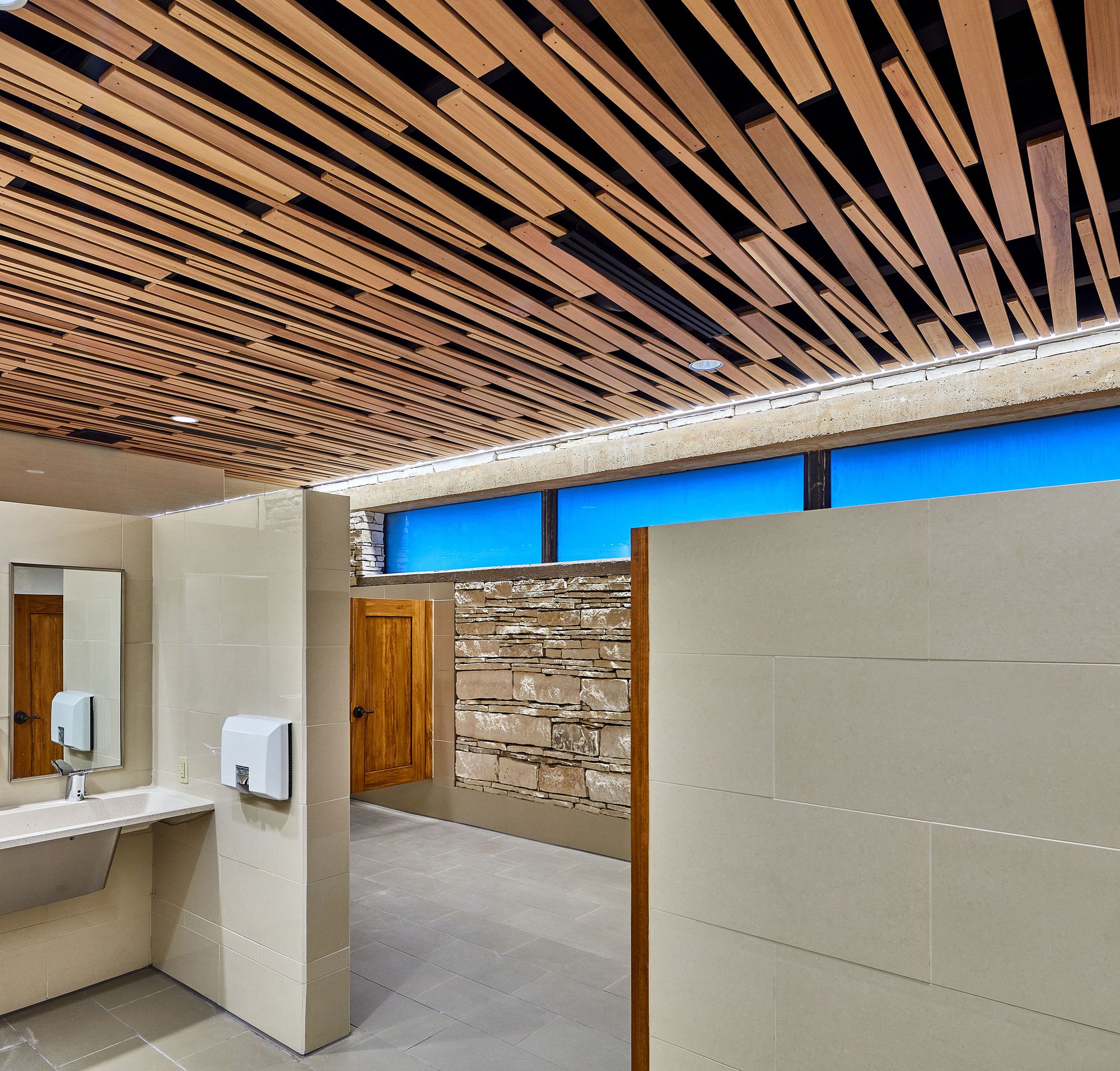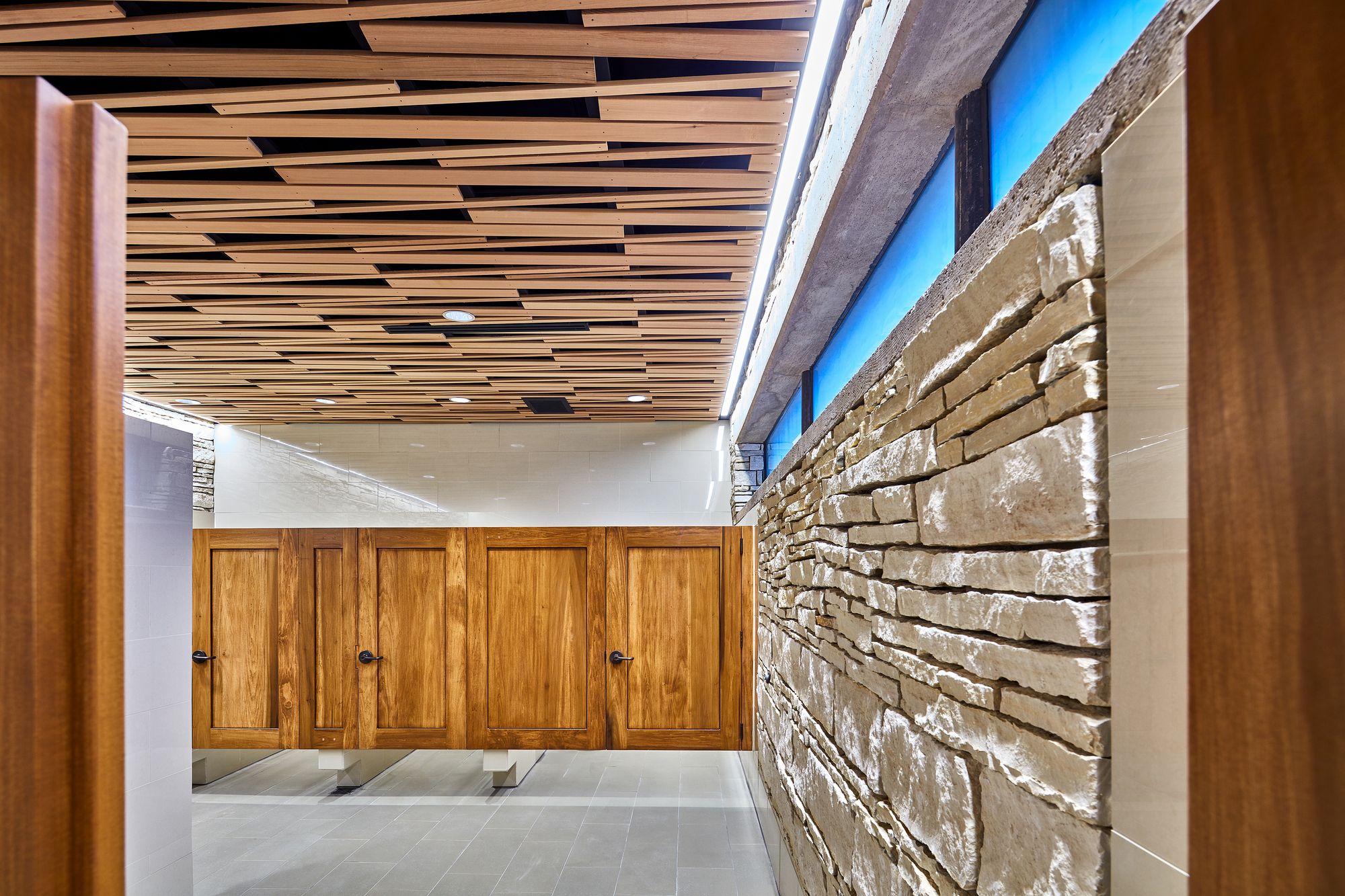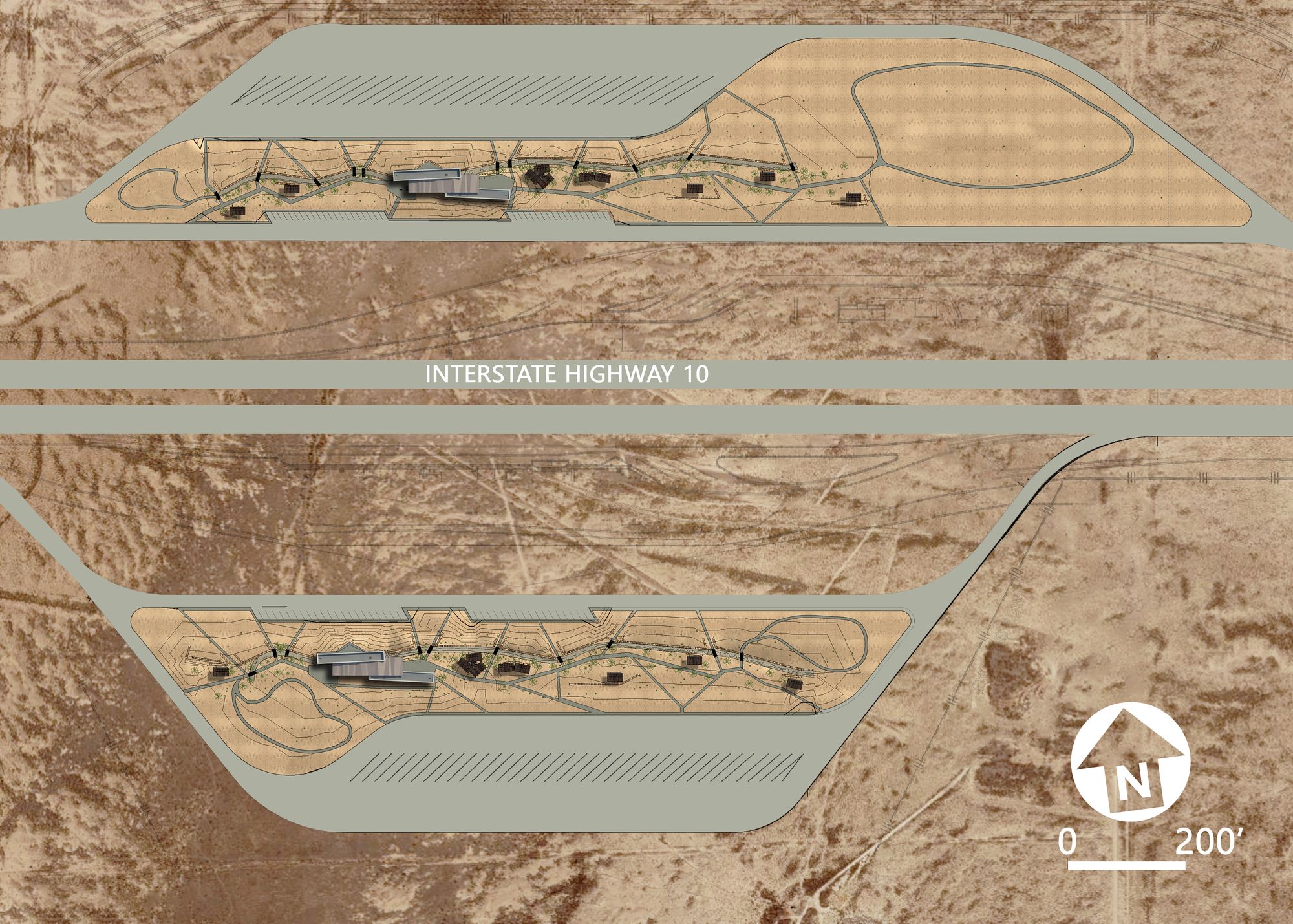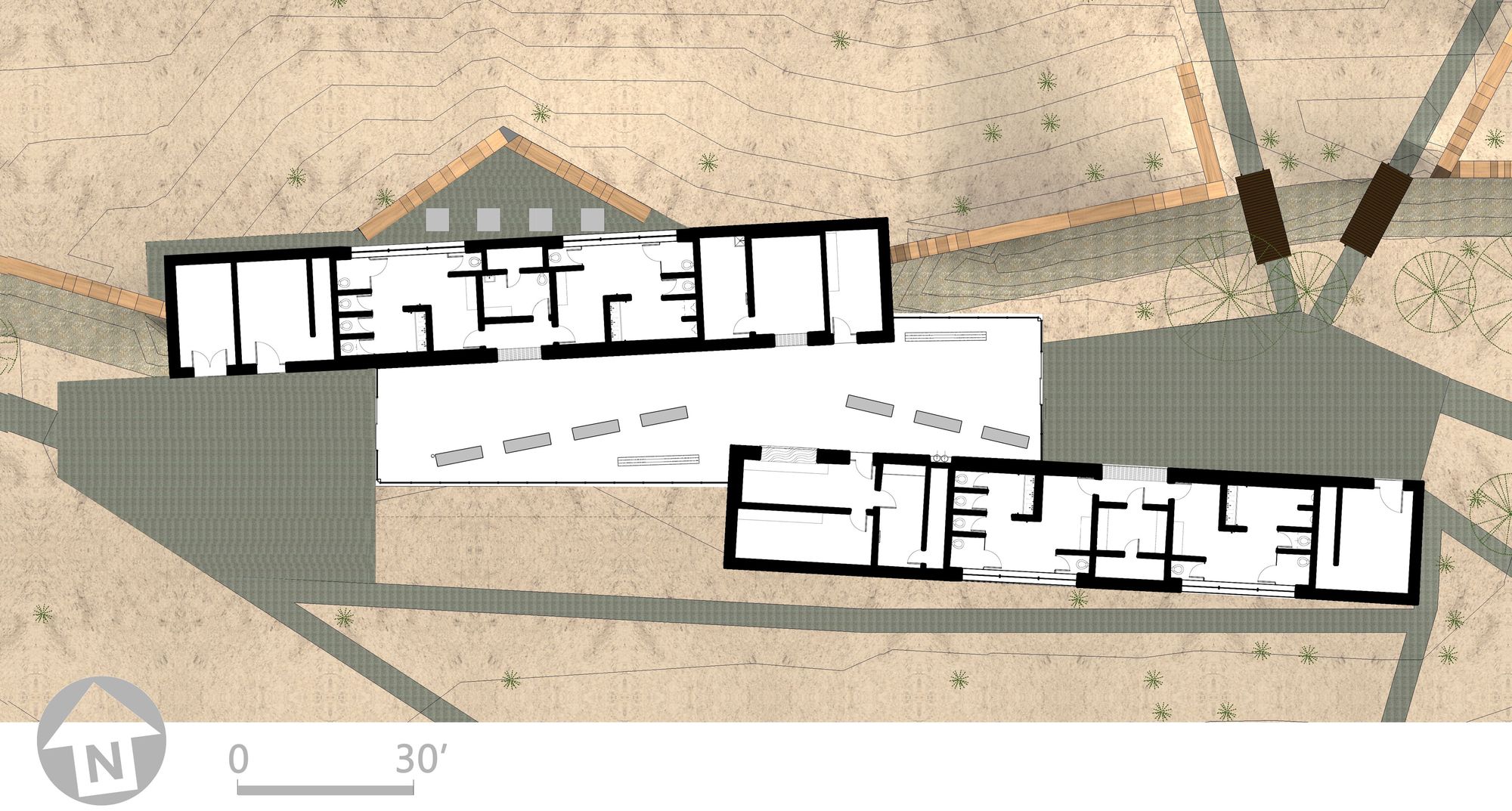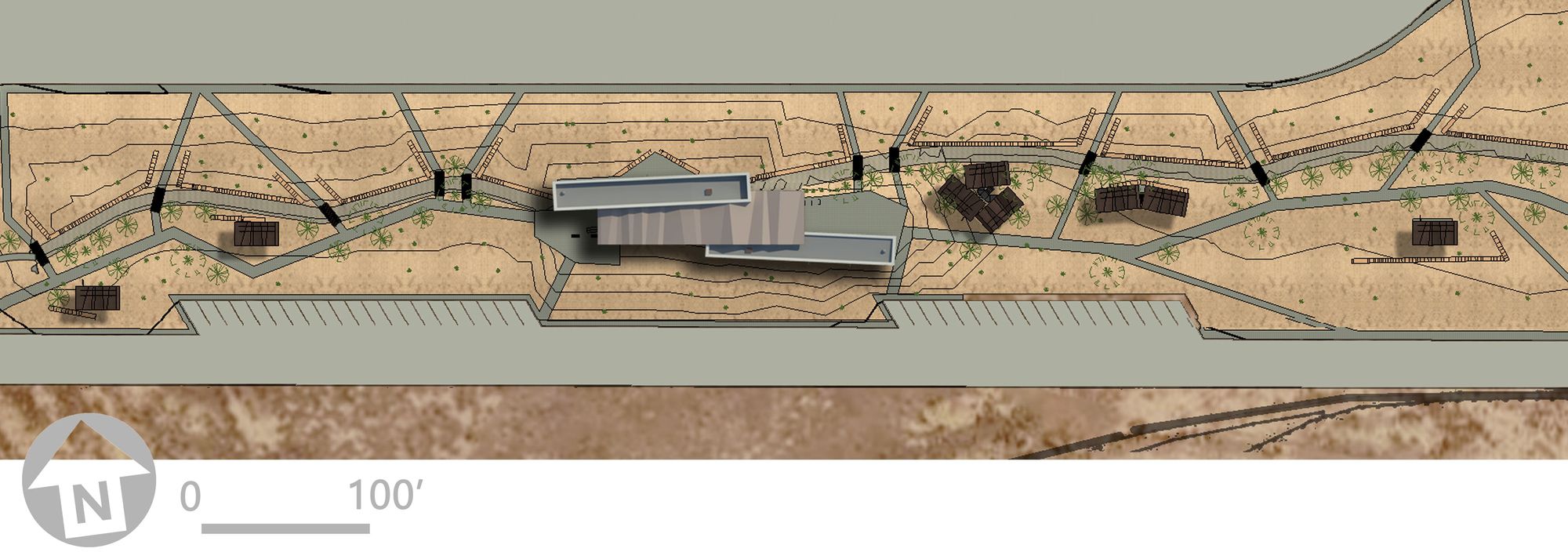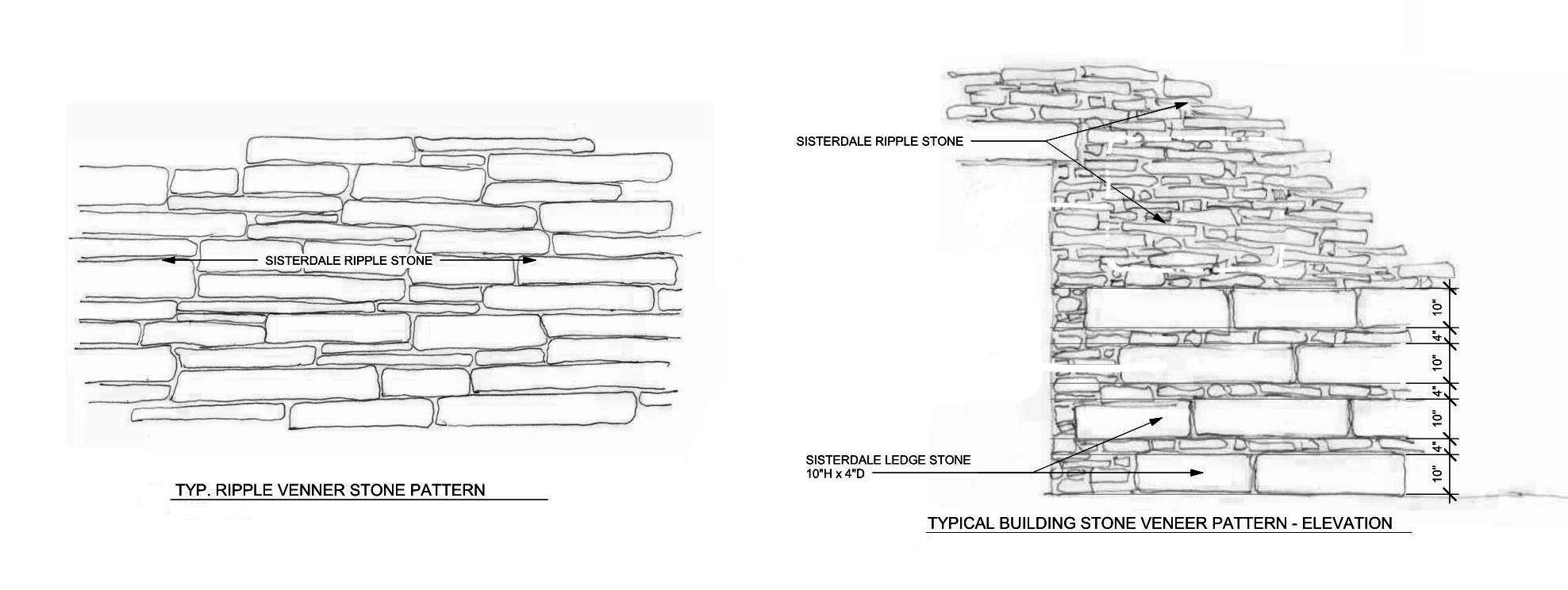Pecos County Safety Rest Area designed by Richter Architects, Native limestone strata are periodically revealed along the Interstate highway. Natural grasses, mesas, and mountains layered along the expansive remote landscape. Along the eastern approach to the Davis Mountains, an interstate highway safety rest area is deprived of the geology, ecology and cultural history of this region of the Chihuahuan desert of West Texas.
The Pecos County safety rest area project provides to the traveling public restrooms, vending, cultural and historical exhibits, picnic areas, play areas, nature trails, and parking for weary drivers who travel along Interstate 10 that connects the west coast to the east coast. Travelers pass by in cars, vans, RVs, trucks, and buses. The goal of the Texas Department of Transportation is to enhance highway safety by providing drivers and families with a welcoming and engaging place for rest and relief from the road fatigue.
Design Strategies of the Pecos County Safety Rest Area:
The land itself tells the story of West Texas.
A substantive interpretation of landscape and geology –the pace drops highway speed of 80 mph to a stroll along the nature trail, from distant mountains to tiny desert flowers.
Shifted stone masses and borrow mountain views to focus long East/West vistas – a traveler’s origin and destination.
Organically coursed native stone suggests geology of the region
Organic folding roofs echo the horizon and floating clouds in the expansive sky.
Wood plank floors audibly recall early frontier structures.
Dry creek topographies drain the site, link picnic arbors and tell a desert eco-story.
Folded plate corten steel arbors against a big sky interpret context form and color.
Native desert plants fenced and protected during construction.
Native plants to conserve water and do not require permanent irrigation.
Passive solar orientation to reduce adverse heat gain and achieve ambiance and transparency.
An interstate highway safety rest area along I-10 is derived of the geology, ecology, and cultural history of this desert region of West Texas at the eastern approach to the Davis Mountains. The project provides to the traveling public restrooms, vending, cultural and historical exhibits, picnic areas, children’s play areas, nature trails and parking for weary drivers of cars, vans, RVs, trucks, and buses. Texas Department of Transportation’s goal for the project is to enhance highway safety by providing drivers and families with engaging rest and relief from the fatigue of the road.
This design provides essential travel amenities via a substantive interpretation of the region. The core inspiration is the land itself, the big sky, and the many ways their beauty and stories are revealed – beauty that can be sensed at highway speed but only fully grasped on foot. From the intimate scale of tiny flowers peeking from dust and rock to the distant horizon scribed by layered mountains –the land is the story of past, present, and future here. Space and line in the exhibit area reinforce the east/west travel that is at the core of the project’s mission while inviting pause from the 80 mph perspective to appreciate land and sky more intimately.
Each building at 7,600 sq (one eastbound and one westbound) is composed of two stone masses shifted to frame borrowed views of the mountain horizon and to focus through-views to the east and west – origin and destination. The geometry further provides beneficial passive solar orientation. Native stone is organically coursed to suggest the geology revealed in highway land cuts as topography rolls. The roof of gallery spaces randomly folds to echo the horizon. Wood plank floors give audible recall to early Texas frontier structures. Dry creeks carry rainwater away from the buildings while connecting the Corten steel plate picnic shades with reminders of how water nourishes and carves the desert land. Native desert plants were fenced and protected during construction.
Project Info:
Architects: Richter Architects
Location: 6364 West Interstate 10, Pecos County, Texas. 79735, United States
Lead Architects: David Richter, FAIA, Elizabeth Chu Richter, FAIA
Area: 7600.0 ft2
Project Year: 2018
Photographs: Craig Blackmon, Elizabeth Chu Richter, David Richter
Manufacturers: Carlisle, Rocky Mountain Metals, CMC, Concho Valley Brick, and Stone, Dal-Tile
Project Name: Pecos County Safety Rest Area
photography by © David Richter
photography by © David Richter
photography by © David Richter
photography by © Craig Blackmon
photography by © Elizabeth Chu Richter
photography by © David Richter
photography by © Craig Blackmon
photography by © Craig Blackmon
photography by © Craig Blackmon
photography by © Elizabeth Chu Richter
photography by © Elizabeth Chu Richter
photography by © David Richter
photography by © Craig Blackmon
photography by © Craig Blackmon
photography by © Elizabeth Chu Richter
photography by © Craig Blackmon
photography by © Elizabeth Chu Richter
photography by © Craig Blackmon
photography by © Craig Blackmon
Site Plan
Plan
Roof Plan
Stone Details


